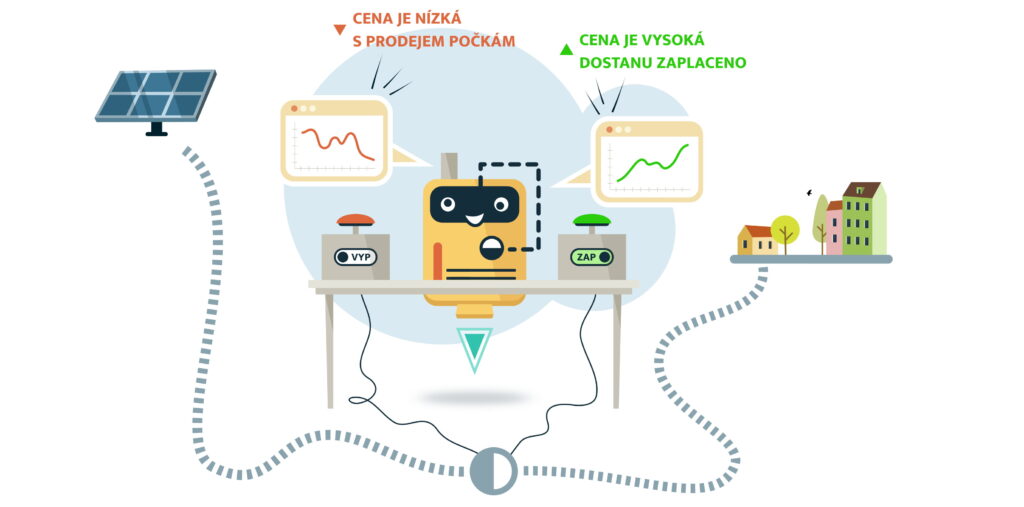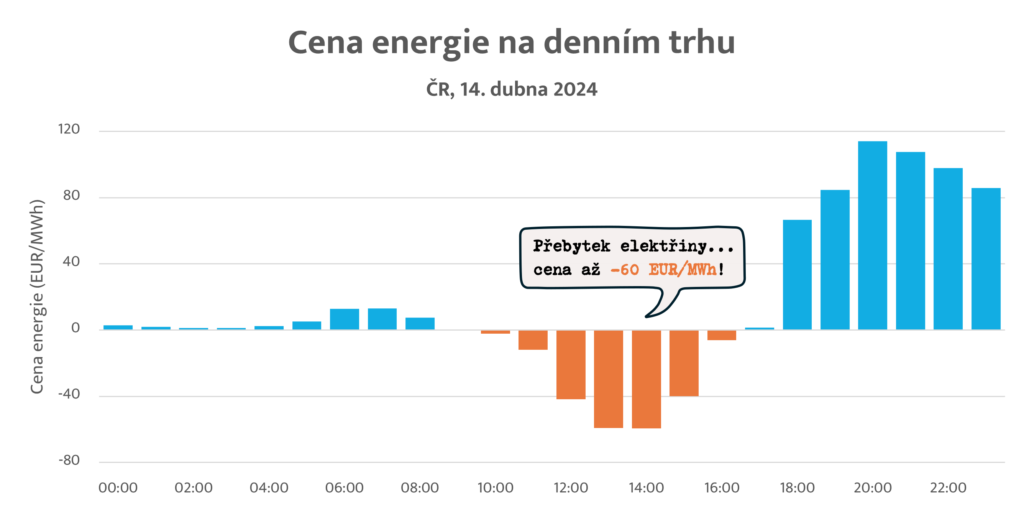Photovoltaics
No one wants to supply electricity to the grid and have to pay for it. We’ll make sure you get your money’s worth for what you deliver. On a switch on/cut off basis, with our software you will only be connected to the grid when you are being paid for your supply. You won’t have to worry about negative prices, you definitely won’t deliver to the network with us and have to pay for it too! We will disconnect your system from the grid during times of negative electricity price.

We are happy to send you more detailed information including our offers.
Do you want to know more about our software for connecting and disconnecting your photovoltaics from the grid according to the price of electricity?
We send a trading signal to PV operators that signals negative energy prices. Based on this signal, the PV inverter can be shut down to avoid penalties, i.e. paying for supply to the grid at a time when the grid is “crowded” with power supply and prices are negative. This trading signal is generated by data provided by the Electricity Market Operator.
Our clients have two ways of using the trading signal:
- We can send you a binary ON/OFF signal right at the moment when the converted spot price becomes positive or negative on the principle of “I want to get paid, but I turn off the supply to the grid at a time when I would have to pay for it”. This signal can be directly used to control the inverter, so you just need to connect your photovoltaics. This is the easiest fully functional solution to implement.
- Alternativně Vám můžeme zasílat časovou řadu přepočtené spotové ceny – tu si musíte lokálně zpracovat a odvodit si signál ON/OFF sami. To je samozřejmě složitější a vhodné pro zájemce s odbornými znalostmi a potřebou plánování. Ti zde získávají výhodu v tom, že znají okamžiky připojení a odpojení na řadu hodin dopředu.
Our clients can choose whichever option suits them better, and they can even switch between the two options. In terms of communication interfaces, we support MODBUS TCP, MQTT and REST. The MODBUS TCP and MQTT data format is directly compatible with AMiT PLCs.

Would you like to learn about examples of negative electricity prices?
On Sunday April 14, 2024, weather conditions were favourable for renewable electricity in most of Europe – the wind was blowing and the sun was out. The European grid was struggling to maintain a balanced state and all sources available were being disconnected. Yet there was a huge surplus of electricity and as a result the price of electricity on the daily market was negative. The lowest price on the Czech market was reached in the afternoon, at -60 EUR/MWh. On the intraday market, the price at one point even reached -150 EUR/MWh.

The situation was very similar in the neighbouring countries, in Germany the price on the daily market was as high as -120 EUR/MWh and on the intraday market the situation was naturally even worse…
If PV operators were to supply the grid in such a situation, they would be pouring money down the drain. As an example, consider an installation with an output of 150 kWp (warehouse, production hall) with a grid supply charge of 475 CZK/MWh. On April 14, the operator would have had to pay around 900 CZK for the grid supply, whereas on a normal day (e.g. April 17) they would have collected 1025 CZK. It is clear that disconnecting the PV at negative daily market prices can return the cost for a larger installation in just two days!
(Source of the used data: OTE ČR and ENTSO-E Transparency Platform)
Wondering about the trend of electricity price fluctuations on the market?
In the recent past, a negative energy price on the daily market was uncommon. However, the share of renewables in the Czech Republic’s energy mix is growing and with it the volatility of the electricity price on short-term markets is increasing accordingly.
On the daily electricity market in the Czech Republic, the average minimum price of electricity has fallen from 60 to 40 EUR/MWh in the last year alone (March 1, 2023 to March 1, 2024). The likelihood of negative prices is increasing. In a single year, the average number of hours with a negative price has increased from about 5 to 20 per week, i.e. by a factor of 4. Over this period, PV losses due to supply during negative price periods represent about 1.5% of the revenue. The worst period, however, is spring and summer, when the effect is about quadruple, with losses of up to 6% of sales.
Disconnecting PVs at times of negative prices is an effective means of avoiding these losses in revenue.
We are happy to send you more detailed information including our offers.
Need more information? Contact us
info@fesordata.cz
+420 776 115 785
